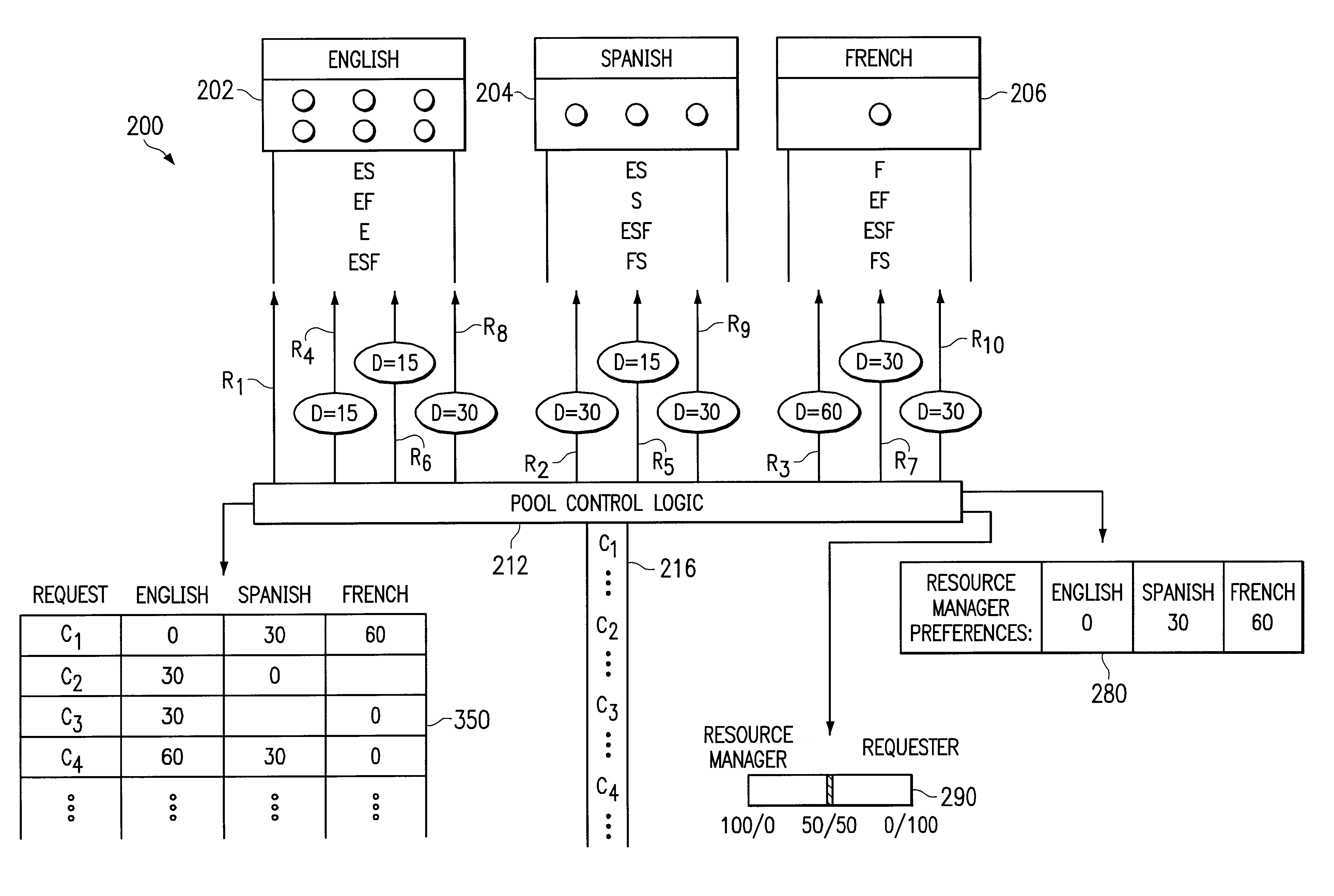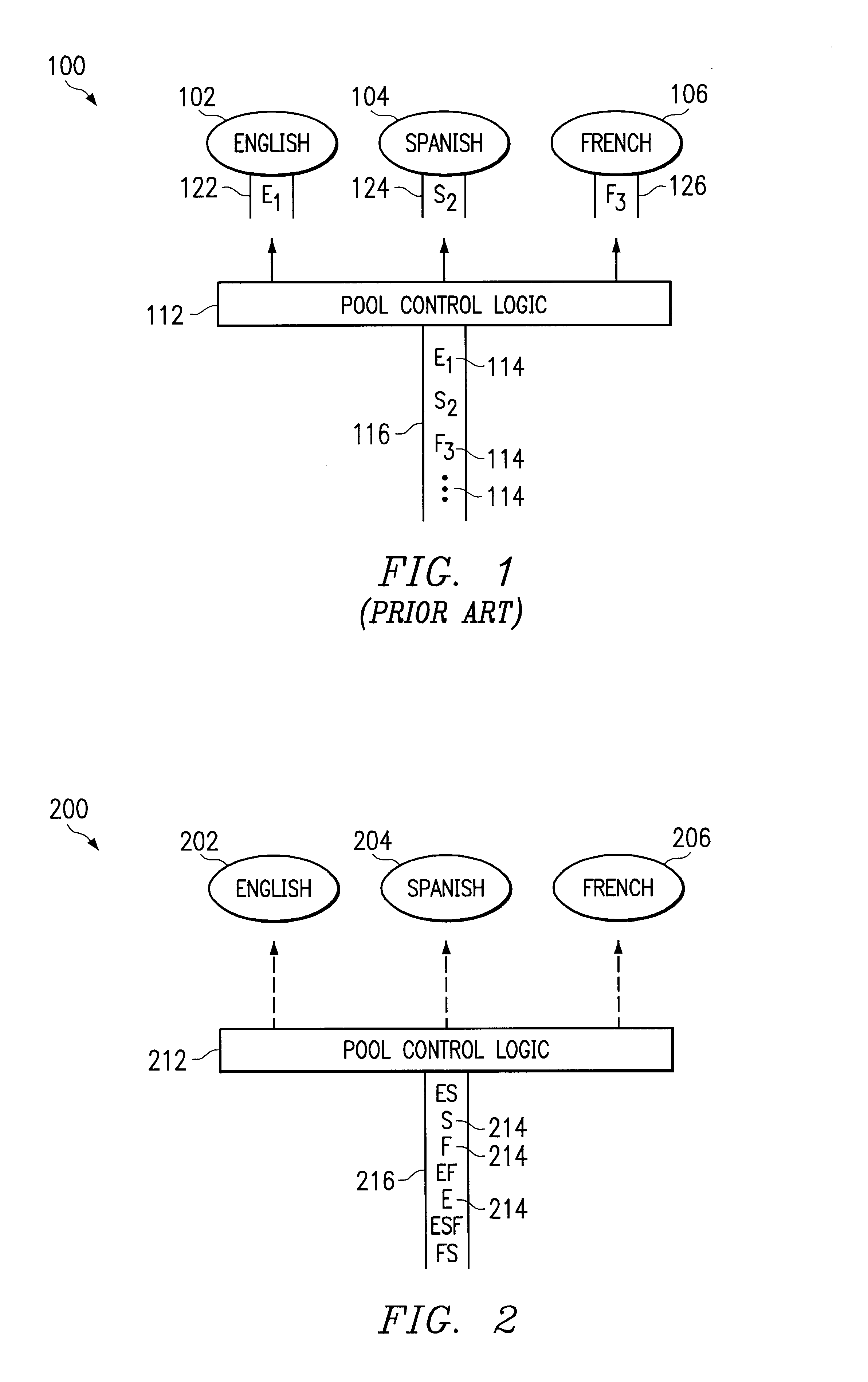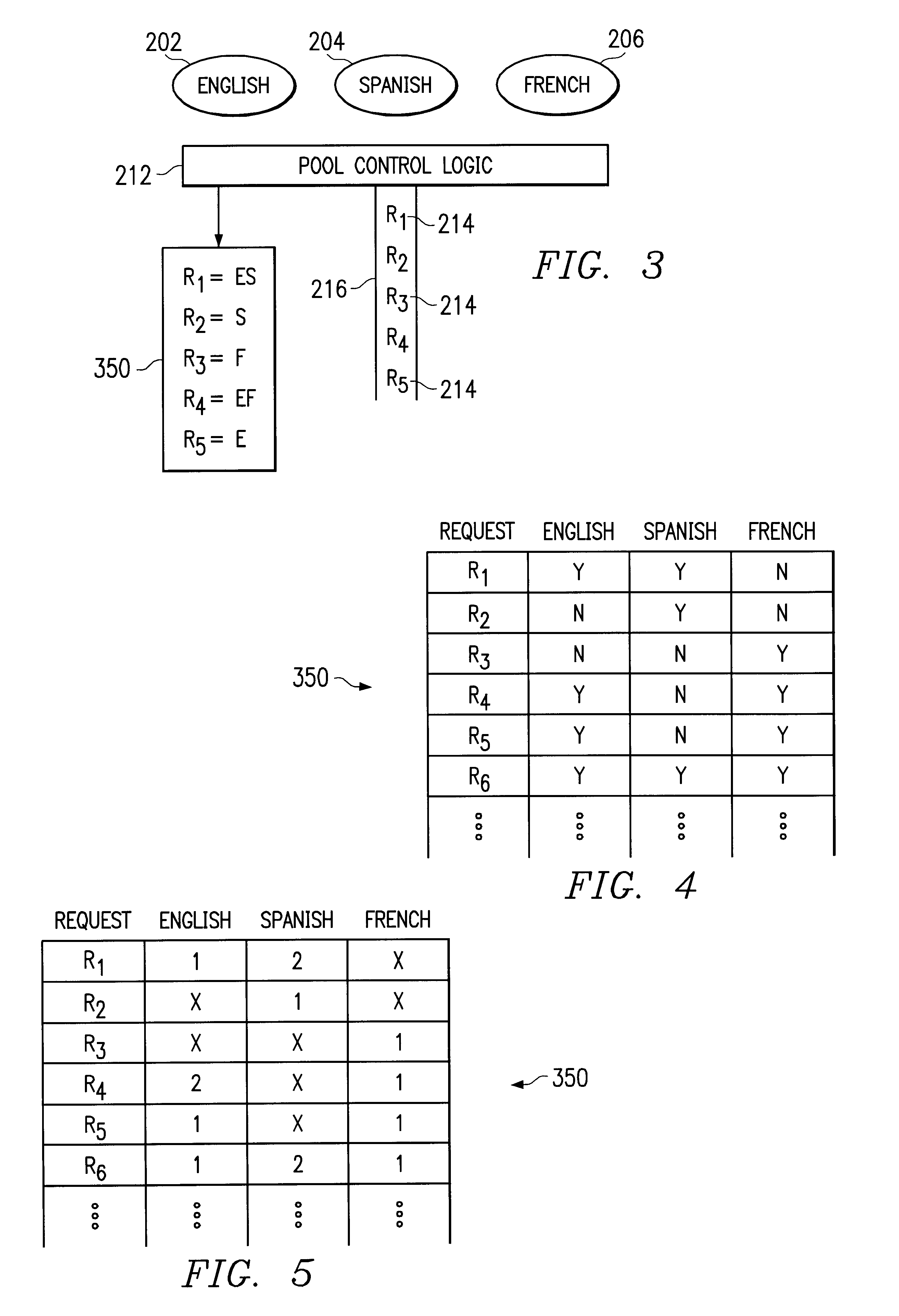Allocation of resources to flexible requests
a resource allocation and flexible request technology, applied in the field of function-based routing, can solve the problems of not prior art methods that do not utilize the full capabilities of multi-skilled requesters, and prior art methods that do not utilize flexible/multi-functional requests effectively. , to achieve the effect of avoiding long waiting periods, improving flexibility in satisfying, and fully optimizing the flexibility of requests
- Summary
- Abstract
- Description
- Claims
- Application Information
AI Technical Summary
Benefits of technology
Problems solved by technology
Method used
Image
Examples
Embodiment Construction
A most preferred embodiment of the present invention is implemented within a telephony call center for allocating resources of the call center (e.g., agents) to service requests (e.g., received calls). It should be recognized that such a call center may be an inbound call center that primarily receives and services inbound calls, an outbound call center that primarily places outbound calls to provide a service, or a hybrid that services both inbound and outbound calls. It should be further recognized that the present invention has a much broader application than only within a call center. That is, the resource management scheme disclosed herein may be utilized for any type of system / environment in which it is desirable to allocate a limited number of resources to requests in order to service such requests. Thus, many other environments may exist in which a limited number of resources are to be managed to allow for effective allocation of such resources to service requests, and any s...
PUM
 Login to View More
Login to View More Abstract
Description
Claims
Application Information
 Login to View More
Login to View More - R&D
- Intellectual Property
- Life Sciences
- Materials
- Tech Scout
- Unparalleled Data Quality
- Higher Quality Content
- 60% Fewer Hallucinations
Browse by: Latest US Patents, China's latest patents, Technical Efficacy Thesaurus, Application Domain, Technology Topic, Popular Technical Reports.
© 2025 PatSnap. All rights reserved.Legal|Privacy policy|Modern Slavery Act Transparency Statement|Sitemap|About US| Contact US: help@patsnap.com



